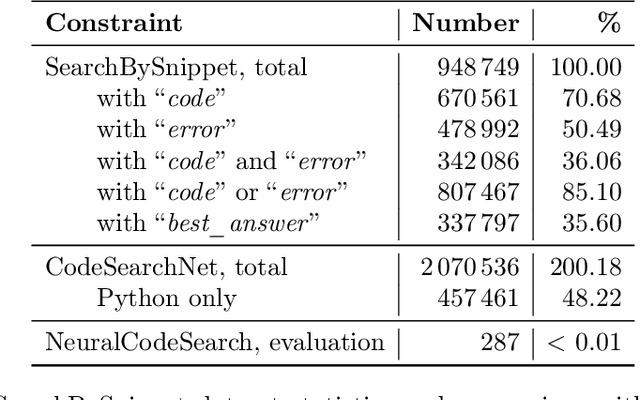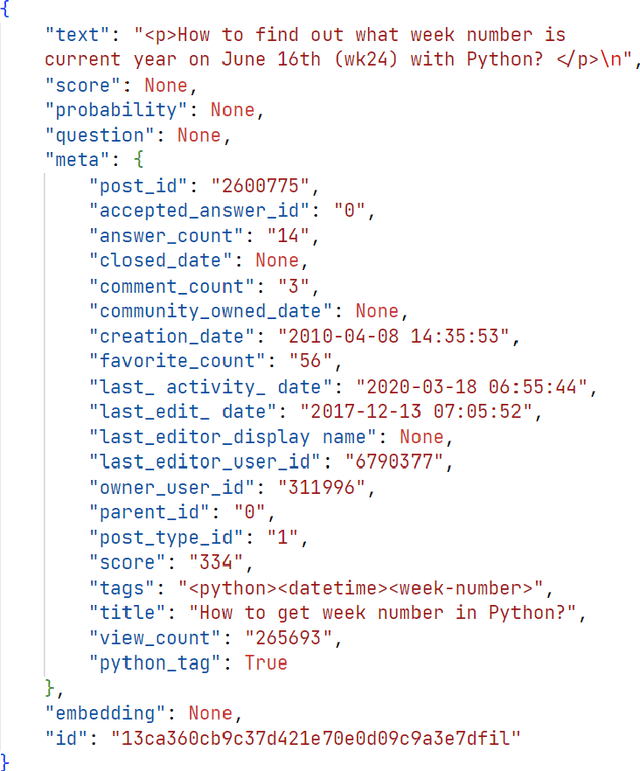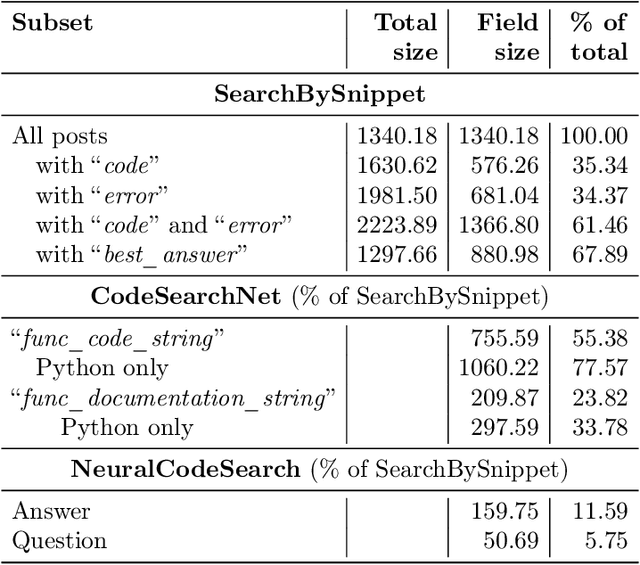Valentin Malykh
MERA Code: A Unified Framework for Evaluating Code Generation Across Tasks
Jul 16, 2025Abstract:Advancements in LLMs have enhanced task automation in software engineering; however, current evaluations primarily focus on natural language tasks, overlooking code quality. Most benchmarks prioritize high-level reasoning over executable code and real-world performance, leaving gaps in understanding true capabilities and risks associated with these models in production. To address this issue, we propose MERA Code, a new addition to the MERA benchmark family, specifically focused on evaluating code for the latest code generation LLMs in Russian. This benchmark includes 11 evaluation tasks that span 8 programming languages. Our proposed evaluation methodology features a taxonomy that outlines the practical coding skills necessary for models to complete these tasks. The benchmark comprises an open-source codebase for users to conduct MERA assessments, a scoring system compatible with various programming environments, and a platform featuring a leaderboard and submission system. We evaluate open LLMs and frontier API models, analyzing their limitations in terms of practical coding tasks in non-English languages. We are publicly releasing MERA to guide future research, anticipate groundbreaking features in model development, and standardize evaluation procedures.
CIDRe: A Reference-Free Multi-Aspect Criterion for Code Comment Quality Measurement
May 26, 2025Abstract:Effective generation of structured code comments requires robust quality metrics for dataset curation, yet existing approaches (SIDE, MIDQ, STASIS) suffer from limited code-comment analysis. We propose CIDRe, a language-agnostic reference-free quality criterion combining four synergistic aspects: (1) relevance (code-comment semantic alignment), (2) informativeness (functional coverage), (3) completeness (presence of all structure sections), and (4) description length (detail sufficiency). We validate our criterion on a manually annotated dataset. Experiments demonstrate CIDRe's superiority over existing metrics, achieving improvement in cross-entropy evaluation. When applied to filter comments, the models finetuned on CIDRe-filtered data show statistically significant quality gains in GPT-4o-mini assessments.
StRuCom: A Novel Dataset of Structured Code Comments in Russian
May 16, 2025Abstract:Structured code comments in docstring format are essential for code comprehension and maintenance, but existing machine learning models for their generation perform poorly for Russian compared to English. To bridge this gap, we present StRuCom - the first large-scale dataset (153K examples) specifically designed for Russian code documentation. Unlike machine-translated English datasets that distort terminology (e.g., technical loanwords vs. literal translations) and docstring structures, StRuCom combines human-written comments from Russian GitHub repositories with synthetically generated ones, ensuring compliance with Python, Java, JavaScript, C#, and Go standards through automated validation. Fine-tuning Qwen2.5-Coder models (0.5B-7B) on StRuCom shows statistically significant improvements of chrf++ and BERTScore over baseline models.
ReplaceMe: Network Simplification via Layer Pruning and Linear Transformations
May 05, 2025Abstract:We introduce ReplaceMe, a generalized training-free depth pruning method that effectively replaces transformer blocks with a linear operation, while maintaining high performance for low compression ratios. In contrast to conventional pruning approaches that require additional training or fine-tuning, our approach requires only a small calibration dataset that is used to estimate a linear transformation to approximate the pruned blocks. This estimated linear mapping can be seamlessly merged with the remaining transformer blocks, eliminating the need for any additional network parameters. Our experiments show that ReplaceMe consistently outperforms other training-free approaches and remains highly competitive with state-of-the-art pruning methods that involve extensive retraining/fine-tuning and architectural modifications. Applied to several large language models (LLMs), ReplaceMe achieves up to 25% pruning while retaining approximately 90% of the original model's performance on open benchmarks - without any training or healing steps, resulting in minimal computational overhead (see Fig.1). We provide an open-source library implementing ReplaceMe alongside several state-of-the-art depth pruning techniques, available at this repository.
Iterative Self-Training for Code Generation via Reinforced Re-Ranking
Apr 13, 2025Abstract:Generating high-quality code that solves complex programming tasks is challenging, especially with current decoder-based models that produce highly stochastic outputs. In code generation, even minor errors can easily break the entire solution. Leveraging multiple sampled solutions can significantly improve the overall output quality. One effective way to enhance code generation is by pairing a code generation model with a reranker model, which selects the best solution from the generated samples. We propose a novel iterative self-training approach for self-training reranker models using Proximal Policy Optimization (PPO), aimed at improving both reranking accuracy and the overall code generation process. Unlike traditional PPO approaches, where the focus is on optimizing a generative model with a reward model, our approach emphasizes the development of a robust reward/reranking model. This model improves the quality of generated code through reranking and addresses problems and errors that the reward model might overlook during PPO alignment with the reranker. Our method iteratively refines the training dataset by re-evaluating outputs, identifying high-scoring negative examples, and incorporating them into the training loop, that boosting model performance. Our evaluation on the MultiPL-E dataset demonstrates that our 13.4B parameter model outperforms a 33B model in code generation quality while being three times faster. Moreover, it achieves performance comparable to GPT-4 and surpasses it in one programming language.
Low-resource Machine Translation for Code-switched Kazakh-Russian Language Pair
Mar 25, 2025Abstract:Machine translation for low resource language pairs is a challenging task. This task could become extremely difficult once a speaker uses code switching. We propose a method to build a machine translation model for code-switched Kazakh-Russian language pair with no labeled data. Our method is basing on generation of synthetic data. Additionally, we present the first codeswitching Kazakh-Russian parallel corpus and the evaluation results, which include a model achieving 16.48 BLEU almost reaching an existing commercial system and beating it by human evaluation.
SumHiS: Extractive Summarization Exploiting Hidden Structure
Jun 12, 2024Abstract:Extractive summarization is a task of highlighting the most important parts of the text. We introduce a new approach to extractive summarization task using hidden clustering structure of the text. Experimental results on CNN/DailyMail demonstrate that our approach generates more accurate summaries than both extractive and abstractive methods, achieving state-of-the-art results in terms of ROUGE-2 metric exceeding the previous approaches by 10%. Additionally, we show that hidden structure of the text could be interpreted as aspects.
Answer Candidate Type Selection: Text-to-Text Language Model for Closed Book Question Answering Meets Knowledge Graphs
Oct 10, 2023Abstract:Pre-trained Text-to-Text Language Models (LMs), such as T5 or BART yield promising results in the Knowledge Graph Question Answering (KGQA) task. However, the capacity of the models is limited and the quality decreases for questions with less popular entities. In this paper, we present a novel approach which works on top of the pre-trained Text-to-Text QA system to address this issue. Our simple yet effective method performs filtering and re-ranking of generated candidates based on their types derived from Wikidata "instance_of" property.
Large Language Models Meet Knowledge Graphs to Answer Factoid Questions
Oct 03, 2023Abstract:Recently, it has been shown that the incorporation of structured knowledge into Large Language Models significantly improves the results for a variety of NLP tasks. In this paper, we propose a method for exploring pre-trained Text-to-Text Language Models enriched with additional information from Knowledge Graphs for answering factoid questions. More specifically, we propose an algorithm for subgraphs extraction from a Knowledge Graph based on question entities and answer candidates. Then, we procure easily interpreted information with Transformer-based models through the linearization of the extracted subgraphs. Final re-ranking of the answer candidates with the extracted information boosts Hits@1 scores of the pre-trained text-to-text language models by 4-6%.
Searching by Code: a New SearchBySnippet Dataset and SnippeR Retrieval Model for Searching by Code Snippets
May 19, 2023



Abstract:Code search is an important task that has seen many developments in recent years. However, previous attempts have mostly considered the problem of searching for code by a text query. We argue that using a code snippet (and possibly an associated traceback) as a query and looking for answers with bugfixing instructions and code samples is a natural use case that is not covered by existing approaches. Moreover, existing datasets use comments extracted from code rather than full-text descriptions as text, making them unsuitable for this use case. We present a new SearchBySnippet dataset implementing the search-by-code use case based on StackOverflow data; it turns out that in this setting, existing architectures fall short of the simplest BM25 baseline even after fine-tuning. We present a new single encoder model SnippeR that outperforms several strong baselines on the SearchBySnippet dataset with a result of 0.451 Recall@10; we propose the SearchBySnippet dataset and SnippeR as a new important benchmark for code search evaluation.
 Add to Chrome
Add to Chrome Add to Firefox
Add to Firefox Add to Edge
Add to Edge